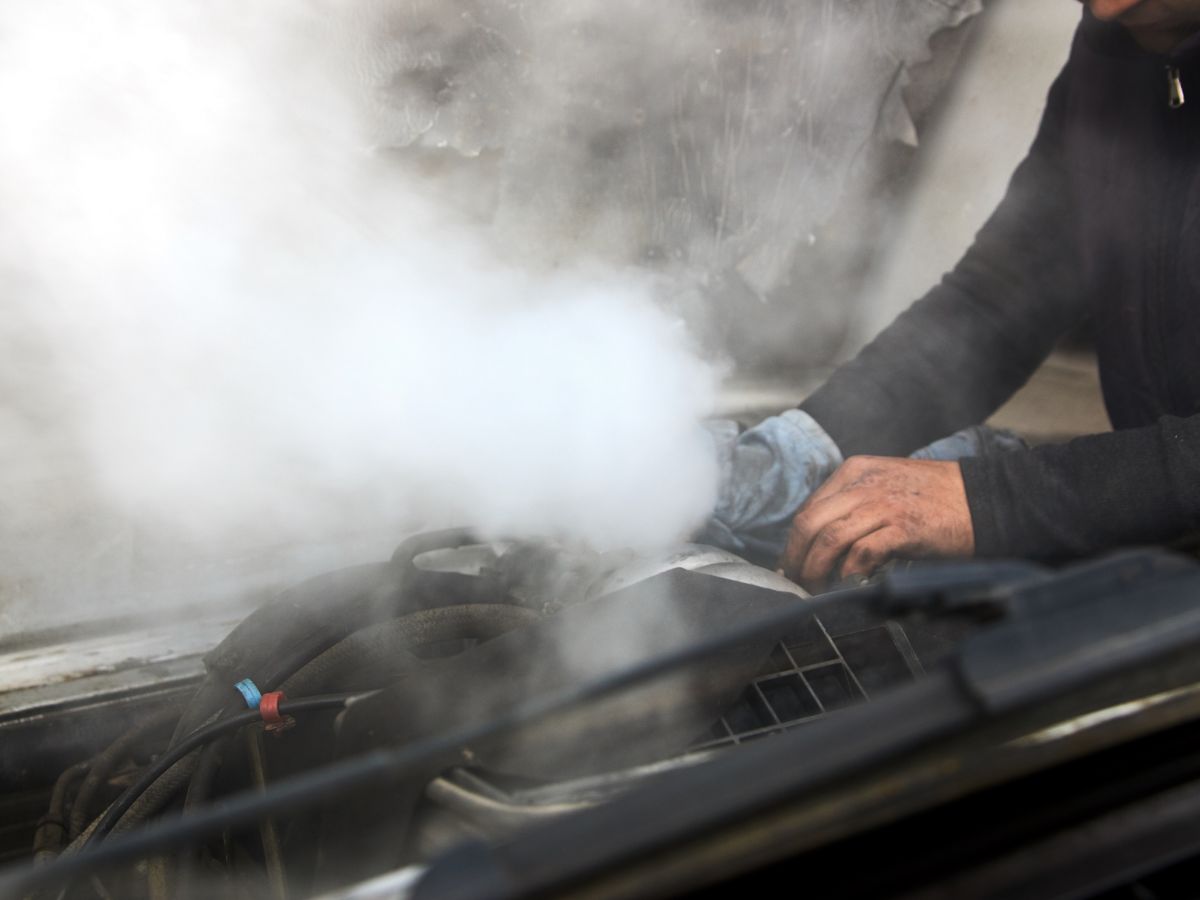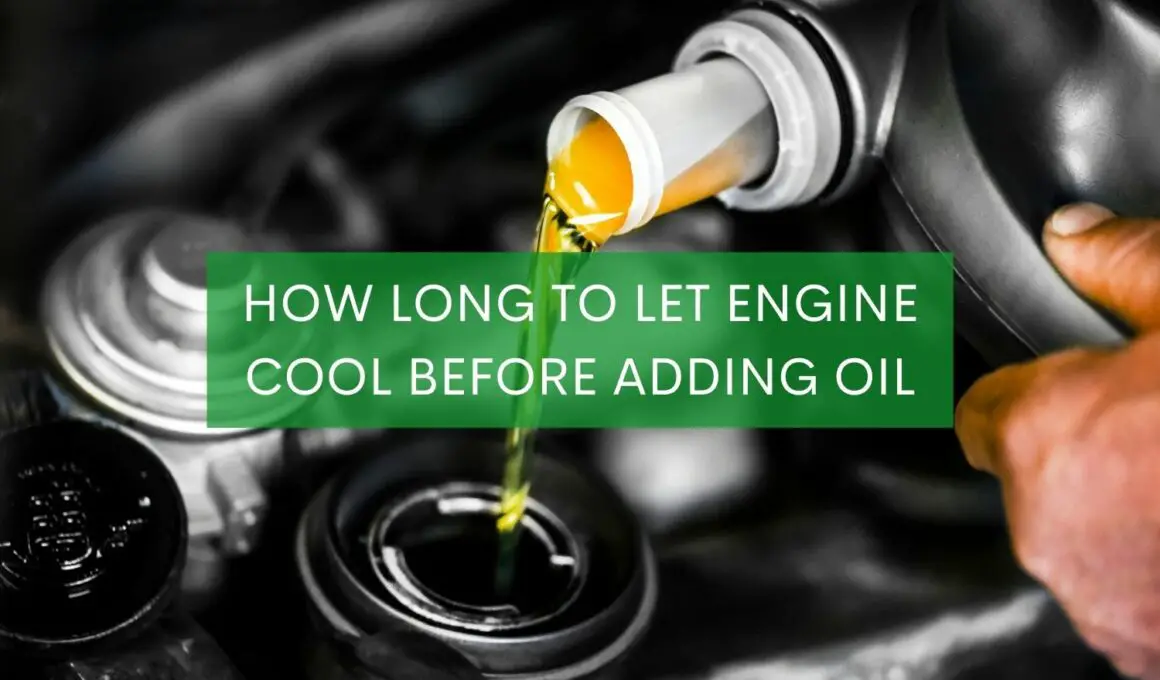In This Article Show
As an experienced mechanic with over a decade’s worth of hands-on experience with handling cars, I’ve encountered various misconceptions about automotive maintenance.
One such common misconception revolves around engine oil – when and how to add it properly. It might seem trivial, but understanding this basic concept can be the difference between a smoothly running vehicle and an unnecessary repair bill.
Throughout my 13 years in the field, I’ve seen the detrimental consequences of hurried oil changes and the effects of pouring oil into an overheated engine. From warping crucial engine components to causing significant safety risks, it’s an issue that demands attention.
This blog post will delve into the importance of letting your engine cool before adding oil, explain why engines heat up, and outline the potential dangers of rushing this process. More importantly, we’ll provide a practical guide on safely adding oil to your engine, peppered with valuable tips from my extensive experience in the field.
The Function of Engine Oil
In any vehicle, the engine oil is crucial to the car’s overall performance and longevity. During my years as a mechanic, I’ve found that understanding these functions can help drivers appreciate the need for proper oil management.
1. Role of Engine Oil in a Car’s Performance
Engine oil is often described as the lifeblood of a vehicle, and for good reason. It lubricates the engine’s moving parts to reduce friction and wear, ensuring that these components can work smoothly and efficiently. But its role doesn’t stop there.
Beyond lubrication, engine oil serves as a coolant, helping to regulate the engine’s temperature by dispersing heat away from the combustion chamber. It also acts as a cleaner, catching and suspending dirt particles and engine sludge that can impair engine performance.
2. How Engine Oil Works with Engine Temperature
The engine oil’s job becomes increasingly critical as the engine temperature rises during operation. It maintains a delicate balance, ensuring components continue to function smoothly while preventing the engine from overheating.
However, if the engine becomes excessively hot, the oil can become too thin and lose its effectiveness.
Conversely, when you add oil to an already overheated engine, its temperature can rise too quickly, affecting its viscosity and ability to lubricate effectively. This interaction between engine temperature and oil is why letting your engine cool before adding new oil is crucial.

Why Engines Get Hot
Engines are intricate machines, and their operation inherently produces heat. It’s normal for an engine to get warm during use, but excessive heat can lead to serious problems. By understanding why engines heat up, we can better grasp the reasons behind letting them cool down before adding oil.
1. Basic Explanation of Engine Operation and Heat Generation
At its core, an engine operates on a series of controlled explosions.
These explosions, caused by the ignition of the air-fuel mixture within the cylinders, generate power to move your vehicle. However, this process also creates heat—lots of it. In fact, a significant amount of the energy produced in combustion is heat energy.
Engine cooling systems, including the radiator, fan, and coolant, work together to manage this heat and keep the engine at an optimal temperature. But like any system, they can fall short if not properly maintained or under certain conditions.
2. Factors that can cause an engine to overheat
Several factors can contribute to an engine overheating. These can include a coolant leak, a malfunctioning thermostat, a clogged radiator, or even something as simple as hot weather. But one often-overlooked factor is improper oil management.
Remember, one of the engine oil’s key roles is to help cool the engine. If the oil is too low or has been compromised due to overheating, it can’t do its job effectively.
This lack of adequate cooling capacity can contribute to engine overheating, hence the need for proper oil management.
Dangers of Adding Oil to a Hot Engine
Regarding engine maintenance, safety should always be our primary concern. Adding oil to a hot engine can pose risks to both your vehicle’s health and your personal safety.
1. Risks Associated with Adding Oil to a Hot Engine
Oil changes are essential maintenance tasks. However, adding oil to a hot engine can lead to issues that you might not have considered.
Hot engine components can quickly raise the temperature of the newly added oil, potentially causing it to break down and lose its lubricating properties prematurely. This breakdown can lead to inadequate lubrication, increased engine wear, and even engine failure.
2. Potential Damage to Engine Components
Hot oil in an overheated engine can lead to a variety of problems. For instance, it can cause seals and gaskets to become brittle and crack, leading to oil leaks.
Excessive heat can warp metal components in more severe cases, leading to serious engine damage.
3. Risks to Personal Safety
Safety should always be paramount. If you attempt to add oil while the engine is still hot, there’s a risk of severe burns from hot engine parts and even the oil itself.
Waiting for the engine to cool down before performing an oil change is always safer and more effective.

How Long to Let Engine Cool Before Adding Oil
Having understood why letting your engine cool before adding oil is necessary, we now arrive at a fundamental question: “How long should we wait?” While the exact timing can vary based on a few factors, there are general guidelines you can follow.
1. General Guidelines for Cooling Time
Typically, allowing your engine to cool for at least 30 minutes before you start working would be best. This period gives your engine components enough time to cool down and minimizes the risk of burns. It’s also a suitable interval to let the oil settle in the oil pan, providing a more accurate reading of oil levels.
2. Factors That Influence Cooling Time
Various factors can influence the time it takes for your engine to cool. The outside temperature, the engine’s initial temperature before turning off the vehicle, and even the type of engine can all affect cooling time. For instance, diesel engines tend to retain heat longer than gasoline engines.
In very hot weather or after hard driving, it may be prudent to wait a bit longer, perhaps even up to an hour. The key here is patience. Waiting for the engine to cool before adding oil can save you from potential hazards and costly repairs.
With these guidelines in mind, let’s move on to the practical steps of adding oil to your engine. In the next section, I’ll walk you through this process, ensuring you’re armed with the knowledge you need to keep your engine running smoothly and safely.
How to Safely Add Oil to Your Engine
Knowing the right way to add oil to your engine is as important as knowing when to do it. Let’s now walk through the process step-by-step.
1. Step-by-Step Guide to Safely Add Oil to an Engine
Allow the Engine to Cool: After turning off your engine, let it cool for at least 30 minutes to an hour, as we discussed earlier.
- Check the Oil Level: Once the engine is cool, remove the dipstick, wipe it clean, reinsert it, then pull it out again to check the oil level. The oil should be between the minimum and maximum marks.
- Add Oil if Necessary: If the oil level is below the minimum mark, you’ll need to add oil. Unscrew the oil filler cap, usually located on top of the engine, and add oil a little at a time.
- Check the Oil Level Again: After adding oil, wait a few minutes for the oil to settle, then check the level again with the dipstick. Repeat this process until the oil level is within the proper range.
- Secure the Oil Filler Cap and Dipstick: Once you’ve ensured the oil level is correct, replace and secure both the oil filler cap and the dipstick.
2. Tips for Safety and Efficiency
Here are a few tips from my many years in the mechanic field to ensure safety and efficiency when adding oil to your engine:
- Always use a clean funnel to add oil. This prevents dirt or debris from contaminating your engine.
- Never overfill your engine oil. Too much oil can increase pressure, potentially damaging seals and causing leaks.
- Use the correct grade of oil for your vehicle. Refer to your owner’s manual for the manufacturer’s recommendation.
- Always perform oil changes and additions on level ground. This ensures accurate oil level readings.
These tips can help you maintain your engine’s health and improve your vehicle’s longevity.
Wrapping it up
Understanding how your engine works and oil’s role in its functioning is key to your vehicle’s longevity. From my 13 years of experience as a mechanic, I can attest to the importance of letting your engine cool before adding oil. It’s not just about engine health, but also about your safety.
We’ve covered a lot of ground in this post, from the function of engine oil, why engines overheat, to the dangers of adding oil to a hot engine. We’ve also provided a guideline on how long you should let your engine cool before adding oil and shared a step-by-step guide on safely adding oil to your engine.
Remember, you risk damaging engine components and potentially harming yourself each time you rush an oil change without letting the engine cool.










